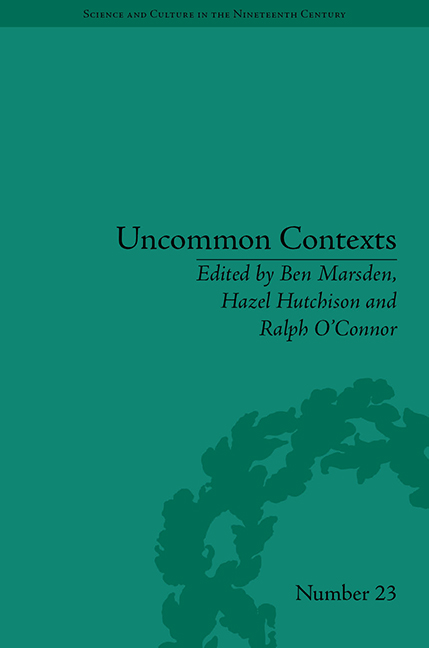Book contents
- Frontmatter
- Contents
- Acknowledgements
- List of Contributors
- List of Figures
- Introduction
- I Literary Genres of Science Writing
- II Pushing the Boundaries of ‘Literature and Science’
- Part III Science and Technology in Fiction
- 6 Elizabeth Gaskell's Social Vision: The Natural Histories of Mary Barton
- 7 ‘I Have in Mind a Study of a Scotch Seaman’: Witnessing Power in Joseph Conrad's Early Literature of the Sea
- 8 ‘The Telegraph has Other Work to Do’: Reading and Consciousness in Henry James's In the Cage
- Notes
- Index
8 - ‘The Telegraph has Other Work to Do’: Reading and Consciousness in Henry James's In the Cage
from Part III - Science and Technology in Fiction
- Frontmatter
- Contents
- Acknowledgements
- List of Contributors
- List of Figures
- Introduction
- I Literary Genres of Science Writing
- II Pushing the Boundaries of ‘Literature and Science’
- Part III Science and Technology in Fiction
- 6 Elizabeth Gaskell's Social Vision: The Natural Histories of Mary Barton
- 7 ‘I Have in Mind a Study of a Scotch Seaman’: Witnessing Power in Joseph Conrad's Early Literature of the Sea
- 8 ‘The Telegraph has Other Work to Do’: Reading and Consciousness in Henry James's In the Cage
- Notes
- Index
Summary
The Victorian literary critic George Saintsbury believed in ‘the cautious drawing of conclusions’. Nevertheless, the final chapter of his magisterial survey A History of Nineteenth Century Literature (1896) offers some powerful opinions about trends in reading and writing towards the close of the century. Among other things, he seems troubled by a growing cultural divide between literature and science. ‘Unfortunately’, he writes, ‘while the scientific side of scholarship is thus becoming, if it has not become, wholly unliterary, the aesthetic side has shown signs of becoming, to far too great an extent, unscientific in the bad and baneful sense’. Out of context, this remark appears to suggest that Saintsbury was an early proponent of the ‘two cultures’ division of intellectual activity between scientific types and ‘literary intellectuals’, as outlined by C. P. Snow over sixty years later. However, a closer look at Saintsbury's text reveals that quite the opposite is the case. His conception of ‘literature’ is broad, embracing works of history, philosophy, theology, journalism, political economy and natural history – any text, in fact, that demonstrates literary ‘style’, whatever its subject matter. And yet ‘science’ clearly connotes something different from the range of meanings associated with the word by Snow, and by most readers since. For example, Saintsbury's statement, quoted above, about the ‘unscientific’ nature of recent literary activity is immediately illustrated by his fury at those critics who ‘will sometimes discourse on Aeschylus without knowing a second aorist from an Attic perfect’ – a weighty charge indeed.
- Type
- Chapter
- Information
- Uncommon ContextsEncounters between Science and Literature, 1800–1914, pp. 167 - 186Publisher: Pickering & ChattoFirst published in: 2014



